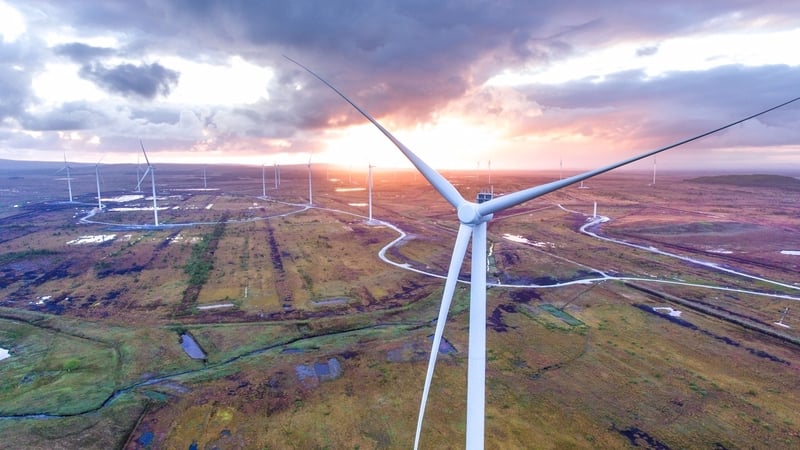Opinion: while objections are valuable and necessary safeguards, they should be a last resort when full engagement and negotiation has failed
It is an unpopular fact that we have to accept the development of significant new infrastructure in and around our communities in order to achieve a green energy sector. Shifting from traditional energy to renewable energy requires the development of wind and solar farms but also extensive new infrastructure to facilitate grid reinforcement, storage developments and interconnection.
To achieve this transformation, we are reliant upon developers to devise projects and for these to be successfully authorised, built and operated so that the renewable electricity they generate can be fed on to the national grid. Furthermore, Ireland’s EU and national commitments require this to be achieved within extremely challenging timelines.
This is anything but straightforward, particularly because Ireland does not have vast tracts of undeveloped land upon which to build. As a result, every new project will lie within or near a host community. We are asking a lot of these host communities, who clearly sustain local impacts from these developments. Another unpopular fact is that the projects will often be of such a scale that they generate more electricity than is required by the community directly.
We need your consent to load this rte-player contentWe use rte-player to manage extra content that can set cookies on your device and collect data about your activity. Please review their details and accept them to load the content.Manage Preferences
From RTÉ Radio 1's Drivetime, Fergal Keane reports on the launch of a public consultation on plans to build a large wind farm just off the coast of South Dublin
Local impacts include industrialisation of rural environments along with visual and noise impacts. It is often reported by impacted community members that their submissions regarding these impacts are not given sufficient weight compared with government policy and climate action. This creates anger and frustration and often leads to legal action aimed at delaying or preventing the project.
On the flip side, it typically takes developers two to three years to design and environmentally assess a project to the point where they are ready to lodge a planning application. That is before they go through the planning approval and licensing processes required to permit them to build it, commence operations and finally, bring renewable energy to the grid. This process requires teams of interdisciplinary professionals working together over prolonged periods of time to manage the environmental, engineering, financial and extensive logistical elements of the project.
The Environmental Impact Assessment process is complex and enormously wide ranging. It is incredibly challenging for the best intentioned and well-resourced developers to dot every ‘i’ and cross every ‘t’ in relation to it. Developers are also reliant on the planning authority do everything right. As such, if well represented objectors treat the assessment process as an administrative trip rope for developers, it is highly likely that some flaw will successfully be identified. Meanwhile, time passes, technology becomes obsolete, project funding is threatened and we continue to depend on fossil fuels.
We need your consent to load this rte-player contentWe use rte-player to manage extra content that can set cookies on your device and collect data about your activity. Please review their details and accept them to load the content.Manage Preferences
From RTÉ Radio 1's Drivetime, The Irish Examiner's Elaine Loughlin, Irish Wind Energy Association's David Connolly and Sliabh Luachra Wind Awareness Group chairman Fred O'Sullivan discuss wind farm guidelines
The Aarhus Convention conferred important legal rights on citizens as regards access to environmental information, public participation in decision making and right of access to justice. These valuable rights were conferred "in order to contribute to the right of every person of present and future generations to live in an environment adequate to his or her health and well being".
However, there is no legal restriction regarding what purpose the rights are used for and as such. They can be as validly used to object to a wind farm as an oil refinery. In fact, many would argue that the local impacts of renewable energy infrastructure do in fact harm local environments.
But we all require electricity in our lives and we therefore need renewable energy infrastructure in our midst. We cannot accept badly designed projects that are a detriment to our communities, but if we challenge them all, the result is an absence of renewable energy. So how to proceed?
We need your consent to load this rte-player contentWe use rte-player to manage extra content that can set cookies on your device and collect data about your activity. Please review their details and accept them to load the content.Manage Preferences
From RTÉ One News, Angela Dowd describes the wind farm near her Co Kerry home as "an absolute living nightmare"
In my ongoing PhD research, I am looking at how we can balance the needs of climate, communities and developers in relation to renewable energy infrastructure. A key preliminary conclusion is that the answer lies in full engagement in the planning process by all parties. The three years prior to the submission of a planning application can be used by impacted communities to engage directly with developers and negotiate the improvement of local impacts and the types of community compensation that would actually be beneficial to them. That goal of achieving a better project is a key objective of public participation that is currently under-utilised.
For this approach to work, it must be required in law. Specific pre-planning obligations with clear and measurable requirements within the EPA Guidelines are centrally important. This will protect developers in that their compliance will be demonstrable and clarify for communities what can be expected within the process.
Catching the developer out at the final stage in the authorisation process is a bad result for our climate. Closing down an operational wind farm due to a legal or operational technicality is a bad result for our climate. While objections and judicial review challenges are valuable and necessary safeguards against environmentally damaging development, they should be a last resort when full, bona fide engagement in the process has failed.
The views expressed here are those of the author and do not represent or reflect the views of RTÉ



